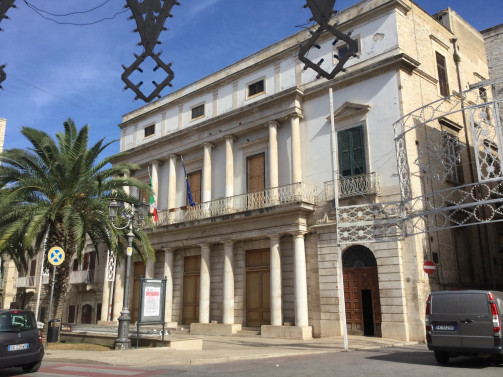Vito Giuseppe Millico was born in Terlizzi on January 20, 1737. From an early age he showed a predisposition for music, attended the music school established in Terlizzi by the nobleman Gennaro De Paù, later continued his studies at the Naples Conservatory where he studied singing and composition, revealing brilliant musical gifts. He became a famous artist and attracted general attention for his “falsetto” i.e. soprano voice, educated by following Farinelli’s example since women were forbidden to perform in theaters. He became very famous and performed in well known theaters in Russia, which is why he was nicknamed the Muscovite, in Naples, in Parma, in Vienna where he met Gluck and performed his melodramas, in Milan, in Paris, in Florence, achieving great success everywhere. Millico composed and performed many melodramas and played the harp and harpsichord. In Terlizzi, his hometown, he had his house built outside the walls, the “Torre del Musico,” where he stayed with pleasure for some periods. In Naples at the Bourbon court he was held in high esteem: he taught singing, performed as a singer with a soprano voice. He died suddenly in Naples on October 2, 1802. Precisely to Millico, who had trod the most prestigious stages of that time, the citizens of Terlizzi wanted to dedicate one of the most fitting places to his figure: the Millico Theater. Strongly desired by the townspeople, the project for the construction of the Municipal Theater was approved in 1836, but it was not until 1878 that the extraordinary beauty of the structure could be appreciated. Passing through the majestic limestone columns, one entered the solemn and refined interior where one admired frescoed ceilings, glittering chandeliers, candelabra, vases and precious furnishings, hand-decorated panels depicting famous people adorning the boxes, and to top it off, an extraordinary 8×9.50-meter curtain made by Neapolitan stage designer Giustino Di Giacomo depicting Ferdinand I D’Aragona in Terlizzi. These were the theater’s heyday years and it was during those years, specifically in 1896, that it was unequivocally named “Millico Theater.” Unfortunately, the theater was seriously damaged during World War II, and subsequent restorations compromised its original appearance. In 1964 the old “Millico Theater” was converted into a movie theater: only the exterior elevation remained of the old and noble structure. Such a sublime place, which had brought luster of culture and civilization to the city, could not exhaust its essence without adequate reconsideration regarding a new plan to renovate the theater itself. At last the Millico Theater will return to honor the image and spirit of the great Terlizzan musician “The Muscovite.”









